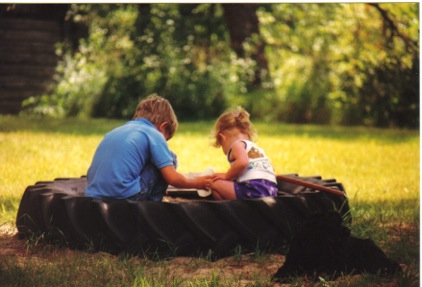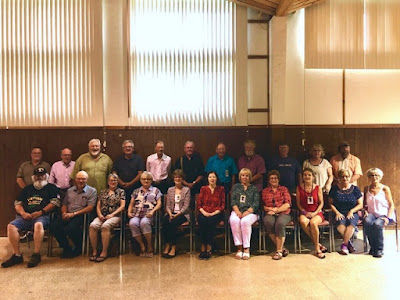I have written about all kinds of things in my blog and in my book, but there is one thing I cannot write about. One would assume that this is because it is not important. To the contrary, sometimes the thing we can’t write about (and have trouble talking about) is one of the most important things in our lives. For me, this has been my daughter Jessi’s mental and physical health.
However, she has had the unbelievable courage to write about it herself, and today I decided I have to find the courage to write about it also. I begin with the words (and picture above) from her Facebook post three days ago, on December 17, 2019:
--8 years old: Diagnosed with Diabetes
However, she has had the unbelievable courage to write about it herself, and today I decided I have to find the courage to write about it also. I begin with the words (and picture above) from her Facebook post three days ago, on December 17, 2019:
--8 years old: Diagnosed with Diabetes
--10 with Anxiety
--15 with Depression
--16 with Suicidal Tendencies
--29 (Today) with Bipolar II
I’m trying to process the latest diagnosis. It wasn’t a surprise, but it still comes as a shock to the system. It's knowledge and questions answered, but I’m heartbroken. With this knowledge comes ugly statistics and painful stigma. I’ve spent so many years afraid of the dark that I didn’t speak honestly about the light; the ignition that arises and becomes the outgoing, fast-talking, overly productive mania. It was a relief most of the time swinging up. I never thought to mention the swing in the first place. So, this is bipolar, eh? I guess it’s time to become a spokesperson for it.
It all began in November 1998. Jessi was losing weight and had little energy. We went to our cabin for Thanksgiving, and Jessi had difficulty walking through the snow. At home she wanted me to carry her up the stairs to bed. We made fun of her for being lazy. I still feel guilty about that.
It all began in November 1998. Jessi was losing weight and had little energy. We went to our cabin for Thanksgiving, and Jessi had difficulty walking through the snow. At home she wanted me to carry her up the stairs to bed. We made fun of her for being lazy. I still feel guilty about that.
On Monday of the following week we took her to her pediatrician. It did not take long for him to render a diagnosis of Type I Diabetes. He sent us immediately to an endocrinologist, who gave her an injection of insulin, and then we all returned home to begin the process of trying to come to terms with this disturbing diagnosis.
 |
| [Picture of a very thin Jessi at Halloween before her Diabetes diagnosis] |
There are those times in life when our words are not meant to be taken literally: they are just pure emotion. And yet such words often reflect the great ambiguity of life as we face the suffering of those we love most. What parent would not be willing to take on their children’s diseases and suffering if it would keep their child from that suffering? What parent would not willingly die before seeing their child die?
But once our emotions begin to subside and our minds clear, we realize our calling as parents is to live for and with our children doing everything we can possibly do to mitigate their pain and to support them as they struggle through life.
Well, I haven’t died, but I have seen so many bad things happen to Jessi. I have had trouble talking about it outside of therapy, and I haven’t been able to write about it. I’m not sure why, but I have decided that now is the time.
Six days ago Jessi, who lives in Virginia with her husband Rob, called Mary and me at our home in Phoenix and told us she was not “safe” (our code word for when she is having suicidal ideations) and asked us to call Rob at work because when she is not safe she cannot be left alone. Mary called Rob on her phone and I kept Jessi on my phone. I talked with her until Rob got home and then we put together a plan so she would not be alone, including seeing both her therapist and psychiatrist. Mary flew out immediately to Virginia to be with her this week and Rob took off work until Mary could get there. And it was through those doctor visits that Jessi was diagnosed this week with Bipolar II.
I don’t know exactly what happened to me this week. Is it being alone all week now that Mary is in Virginia? Is it the recent conversations I have had with several life-long friends who have shared their worries and fears about their children? Is it trying to get ready for Christmas? Is it the longing that "the hopes and fears of all the years will be met” in Christ again, and with renewed power in our lives?
Two months ago Mary and I walked Jessi down the aisle at her wedding, and I officiated the service. Jessi wanted to do the “first look” for me, and then Rob. That picture is now my FB Profile picture. As powerful as a picture can be, it still can’t capture the depths of the pain, joy and hope we feel when we look into the eyes and hearts of our children.
All of us parents carry that experience every day of our lives. It is so very difficult to speak and write about it, but there comes a time when, for our own sake and the sake of those we love, we must. We also write and speak about it as a way to help each other face our parental fears and hopes as a step in supporting each other.
All of us parents carry that experience every day of our lives. It is so very difficult to speak and write about it, but there comes a time when, for our own sake and the sake of those we love, we must. We also write and speak about it as a way to help each other face our parental fears and hopes as a step in supporting each other.
Now, finally, it is time for me to write about the one thing I haven’t been able to write about, as I share in the next three posts what I have learned about being a parent when it comes to the suffering of our children.




























